|
Displaying items by tag: Museums
The latest design of a planned addition to the Milwaukee Art Museum drew praise at a public hearing Tuesday night, with the Lakefront Development Advisory Commission unanimously recommending approval for the project.
The commission in April 2013 unanimously approved the initial museum addition design, which was done by architect Jim Shields of HGA Architects and Engineers.
But a revised design — made by HGA but without Shields — unveiled last month drew criticism. The Journal Sentinel's Mary Louise Schumacher called it "a dose of dullness for our most prized public space."
Another revision, this one with Shields back at the helm, was unveiled Tuesday.
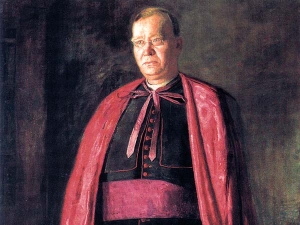
The St. Charles Borromeo Seminary in Wynnewood, Pennsylvania, will sell a number of works from its extensive fine art collection, including five portraits by Thomas Eakins. Eakins, a realist who lived and worked in Philadelphia, is widely considered one of the most important American artists in history.
Christie’s will facilitate a private consignment sale of the works, which mostly feature past faculty members and have been in the seminary’s possession for around 80 years. A sixth Eakins painting, which was loaned to the seminary by the American Catholic Historical Society, will also be put up for consignment. In addition, the seminary is consigning a painting by the American Impressionist Colin Campbell Cooper as well as a work by the expressionist painter Alice Neel. Bonhams and Sotheby’s will broker those sales respectively.
Before deciding to sell the works, the seminary had a committee of arts specialists and seminary alumni and administrators conduct a year-long study. The seminary looked into partnering with local museums and historical societies, hoping that one would offer to acquire the paintings, but none of the organizations voiced interest.
Proceeds from the sales will help fund a major renovation of St. Charles’ Main Line campus, which will include making the seminary smaller and renovating its existing facilities.
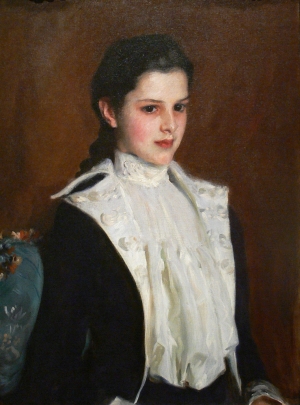
Three Texas museums -- the Amon Carter Museum of American Art in Fort Worth, the Dallas Museum of Art, and the Nasher Sculpture Center in Dallas -- are adding more than a combined 1,700 high-resolution works of art to the Google Art Project. The Art Project, which is part of the Google Cultural Institute, allows users to virtually explore works of art from international museums, institutions, and archives. Currently, there more than 57,000 high-resolution images of works ranging from oil on canvas paintings to sculpture and furniture.
The Amon Carter Museum has submitted 1,200 images to the Google Art Project, showcasing works by American artists such as Mary Cassatt, John Singer Sargent, and James McNeill Whistler. The museum also contributed 200 photographs from its collection. The Dallas Museum of Art submitted around 500 works from its collection including “Sheaves of Wheat” by Vincent van Gogh. The Nasher Sculpture Center, which houses a collection of modern and contemporary sculpture, submitted images of works by Auguste Rodin and Mark di Suvero.
The exceptional quality of the images coupled with the Google Art Project’s custom-built zoom view, allows users to explore the finest details of each object. Visitors can browse works by artist, title, medium, museum, country, time period, or collection. Virtual guided tours by experts are available on the site so that users can learn more about a particular work or topic.
To view works from the Amon Carter Museum of American Art, the Dallas Museum of Art, and the Nasher Sculpture Center, visit the Google Art Project.

The Robert Rauschenberg Foundation announced that six American museums have acquired works by Robert Rauschenberg thank to its Gift/Purchase Program. The program was designed to expand public access to and awareness of Rauschenberg’s work by offering institutions the opportunity to acquire artworks from the foundation’s collection through equal parts gift and purchase.
The Metropolitan Museum of Art in New York acquired “Bande de Surete/Twin City/Nipples (Cardboard)” and “Vow (Jammers);” The Minneapolis Institute of Arts in Minnesota gained “Park/ROCI MEXICO;” the Museum of Modern Art in New York obtained “Nabisco Shredded Wheat (Cardboard),” “Gull (Jammer),” and “Stop Side Early Winter (Glut);” The New Orleans Museum of Art in Louisiana acquired “Melic Meeting (Spread);” The San Francisco Museum of Modern Art in California gained “Rosalie/Red Cheek/Temporary Letter/Stock (Cardboard);” and the Solomon R. Guggenheim Museum in New York obtained “Untitled (Venetian).”
The works, which were created across two decades, are from some of Rauschenberg’s most important series. His Cardboards explore the aesthetic potential of everyday materials; the Venetians are sculptural works reminiscent of the Italian city’s atmosphere; Jammers, which were inspired by a trip to India, celebrate the sensual qualities of fabric; Spreads are large-scale works that combine printed imagery and found objects; Gluts touch on socioeconomic issues; and the artist’s ROCI series was created as part of a humanitarian project that promoted world peace through artistic dialogue with local cultures.
Rauschenberg, who helped bridge the gap between Abstract Expressionism and Pop art, was a pioneering figure in 20th century art. He is best known for his “Combines,” which are part painting and part sculpture. Rauschenberg often used found objects and non-traditional materials in these works.

The European Parliament has decided to increase the culture budget for its 28 member nations by nine percent and will designate $1.97 billion for the Creative Europe program, which will help support artists, museums, performing arts institutions, and other cultural organizations. Creative Europe also plans to launch a new financial guarantee facility in 2016, which will enable small cultural and creative businesses to access up to 750 million euros in bank loans.
The goal of Creative Europe is to boost cultural and creative sectors to help stimulate economic growth, employment and innovation. Europe, which is in the midst of an economic crisis, has seen its overall budget cut down to 960 billion euros (from 975 billion euros) for the seven years between 2014 and 2020.
At a recent press conference, Androulla Vassiliou, European Commissioner for Education, Culture, Multilingualism, Sport, Media and Youth, said, “I am very pleased that we have achieved a 9 percent increase [for the program] despite the fact that the European budget in general has been decreased. We have to recognize that culture has an increasing value as a public good, especially in times of crisis, because it helps the social cohesion of our societies. Research clearly shows the strong growth potential of the cultural and creative sectors. They play a major role in Europe’s economy and account for about 4.5 percent of the EU GDP, employing about 8 million people. This is not to be underestimated.”

In honor of the statewide celebration – Four Centuries of Massachusetts Furniture – the state’s governor, Deval Patrick, has named September 17, 2013 Massachusetts Furniture Day. A special event will be held in Nurses Hall in the State House in Boston.
Four Centuries of Massachusetts Furniture is the first-ever collaboration between 10 museums and cultural institutions throughout the state that will highlight the area’s furniture making legacy. A series of exhibitions and public programs will explore furniture making from the 1600s to the present day. Participating institutions include the Colonial Society of Massachusetts; Concord Museum; Fuller Craft Museum; Historic Deerfield; Historic New England; Massachusetts Historical Society; Museum of Fine Arts, Boston; North Bennet Street School; Old Sturbridge Village; and Peabody Essex Museum; and Winterthur Museum, Garden and Library.
Dennis Fiori, President of the Massachusetts Historical Society and one of the project’s founders, said, “We are honored that Governor Patrick has recognized the Four Centuries of Massachusetts Furniture project with such a wonderful designation. By declaring September 17 as Massachusetts Furniture Day, Governor Patrick is recognizing the truly remarkable legacy in American furniture history that Massachusetts holds, not only as a traditional industry but also as an art form.”
Four Centuries of Massachusetts Furniture will run through December 2014. For more information visit www.fourcenturies.org.
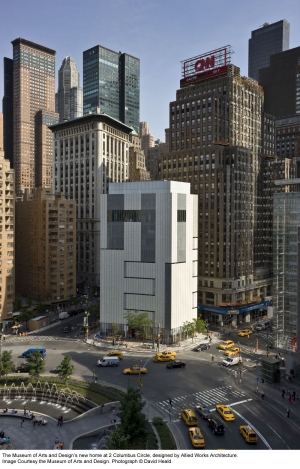
The Museum of Arts and Design in New York has appointed Dr. Glenn Adamson as the new Nanette L. Laitman Director. Adamson, who previously worked at London’s Victoria & Albert Museum, will succeed Holly Hotchner, who stepped down at the end of April. Adamson will assume his role at the Museum of Arts and Design on October 15, 2013.
Adamson helmed the V&A’s Research Department, which oversees, evaluates and supports the development of museum projects. In this role, Adamson helped bring major exhibitions to fruition, managed partnerships with other institutions and led academic fundraising. He also contributed to the museum’s publications, educational programs, media outreach and commercial activities. Before joining the V&A in 2005, Adamson served as Curator for the Chipstone Foundation in Milwaukee, Wisconsin, which collects and promotes research within the field of decorative arts.
An advocate for the reconsideration of craft as an inescapable cultural force rather than an unassuming art classification, Adamson has had a profound effect on makers as well as craft historians and theorists. He has published a number of books on the subject and is founding co-editor of the academic, peer-reviewed Journal of Modern Craft.
Adamson said, “I am honored to have been selected to serve as the next director of MAD…I look forward to building on the museum’s recent successes and to working with the museum’s visionary board and senior leadership to enhance and extend MAD’s potential.”

In November 2013, the Dallas Museum of Art (DMA) will unveil its new Paintings Conservation Studio as part of the institution’s initiative to establish a more comprehensive on-site conservation program. Three long-term research projects that will utilize new analytical techniques and technologies will inaugurate the space.
The DMA’s new conservation studio features cutting edge technology including a digital x-ray system and will serve as a center for study and research as well as conservation treatments. The studio, which is enclosed by a glass wall, will be open to visitors so that guests of the museum can observe daily conservation activities.
As part of its efforts to improve its conservation capabilities, the Dallas Museum of Art has embarked on a number of projects with museums and universities in north Texas. The DMA is currently working with the Amon Carter Museum of American Art, the University of Texas at Dallas and the University of North Texas in Denton on various initiatives including the study of ultramarine pigment discoloration, the pigment and medium analysis of a work by Paul Gauguin, and the development of atomic sampling techniques for silverplated objects.
Maxwell L. Anderson, the Dallas Museum of Art’s Eugene McDermott Director, said, “The launch of these new conservation initiatives supports the DMA’s commitment to responsible stewardship of our collection, and the advancement of conservation research and practices in the region and across the museum field. We look forward to strengthening the DMA’s culture of conservation with the opening of this new facility and integrating conservation into the fabric of the Museum experience for the benefit and enjoyment of our community.”
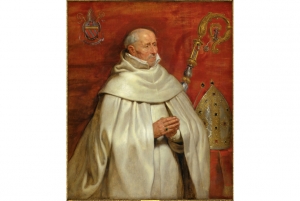
A Danish phD thesis revealed that a common preservation method may cause more harm than good to artworks. The study showed that when an oil painting treated with the once-popular wax-resin lining is exposed to relative humidity over 60 percent there is a good chance that it will shrink, compressing the paint and causing it to flake off. The revelation was part of Cecil Krarup Andersen’s thesis, which was recently defended at the Royal Danish Academy of Fine Arts School of Conservation.
During the 20th century the “lining” technique was popular among conservators and used to protect well-known masterpieces including works by Rembrandt and Vincent van Gogh while traveling for loan exhibitions. For her thesis Lined canvas paintings: Mechanical properties and structural response to fluctuating relative humidity, Andersen studied the Danish national gallery's collection of Danish Golden Age paintings and examined the difference in moisture sensibility before and after wax-resin lining.
The wax-resin technique became popular during the 1960s but was obsolete by the 1970s since the method tended to darken paintings’ colors. However, the discovery of relative humidity’s effect on wax-resin lined canvases is a new finding. While the majority of museums maintain an approximate relative humidity of 50 percent, malfunctioning climate controls and flooding could leave some of the finest works in the canon of art in perilous danger.
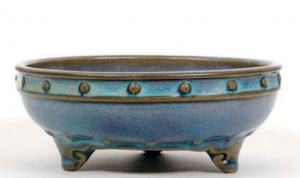
The Croydon Council, a local authority in south London, will sell 24 antique Chinese ceramic vases, bowls and bottles to benefit the redevelopment of Fairfield Halls, a 50-year-old arts center in the area. Local businessman Raymond Riesco gifted the valuable objects to the Council in 1959 as part of a 230-piece collection of artifacts that included Ming dynasty bowls. The 206 objects retained by the Council will remain on view for the public.
The decision to break up the collection has drawn criticism from the museum sector. David Anderson, president of the Museum Association, told the BBC, “Croydon’s decision to sell valuable Chinese ceramics threatens not just its own reputation, but that of the museum sector as a whole. It would undermine the widespread public trust in museums and I strongly urge them to reconsider.”
Arts Council England has also voiced opposition to the sale and penned a letter to the Croydon Council earlier this month warning them that their decision was not in line with English museum standards.
|
|
|
|
|